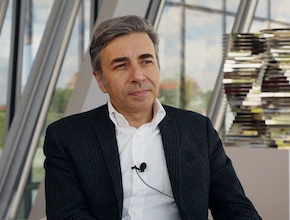Full-face masks or helmets are not used universally in everyday practice. What is your experience with using such devices? Do you use them often in your practice? Which patients would benefit most from this type of intervention?
Andreas Freitag: We use it often because a large proportion of our patients are overweight and a lot of times the masks are designed for much smaller faces, so it does not work, it does not fit on their nose, does not fit in the whole area here. Oftentimes the patients are bigger individuals and they feel less claustrophobic with a face mask.
We have respiratory therapists and we work with them. We tell the patients that we are going to try this intervention. We hopefully try to explain to them: do not feel claustrophobic, do not get scared, this is going to help you breathe, you are going to feel as if you are in a sort of a wind tunnel, or you are actually feeling the wind coming to your face. So we use [full-face masks], not uncommonly, especially in heavyset individuals.
We do not use the helmets very often, though. Once again, it is that it is difficult to monitor the patients when you are having the helmet on. It is hard to visualize or see what is going on with the patients. I think claustrophobia is a real issue for a lot of these patients. So we do not use the helmets very often, if at all. But we definitely use the full-face masks.
 English
English
 Español
Español
 українська
українська







